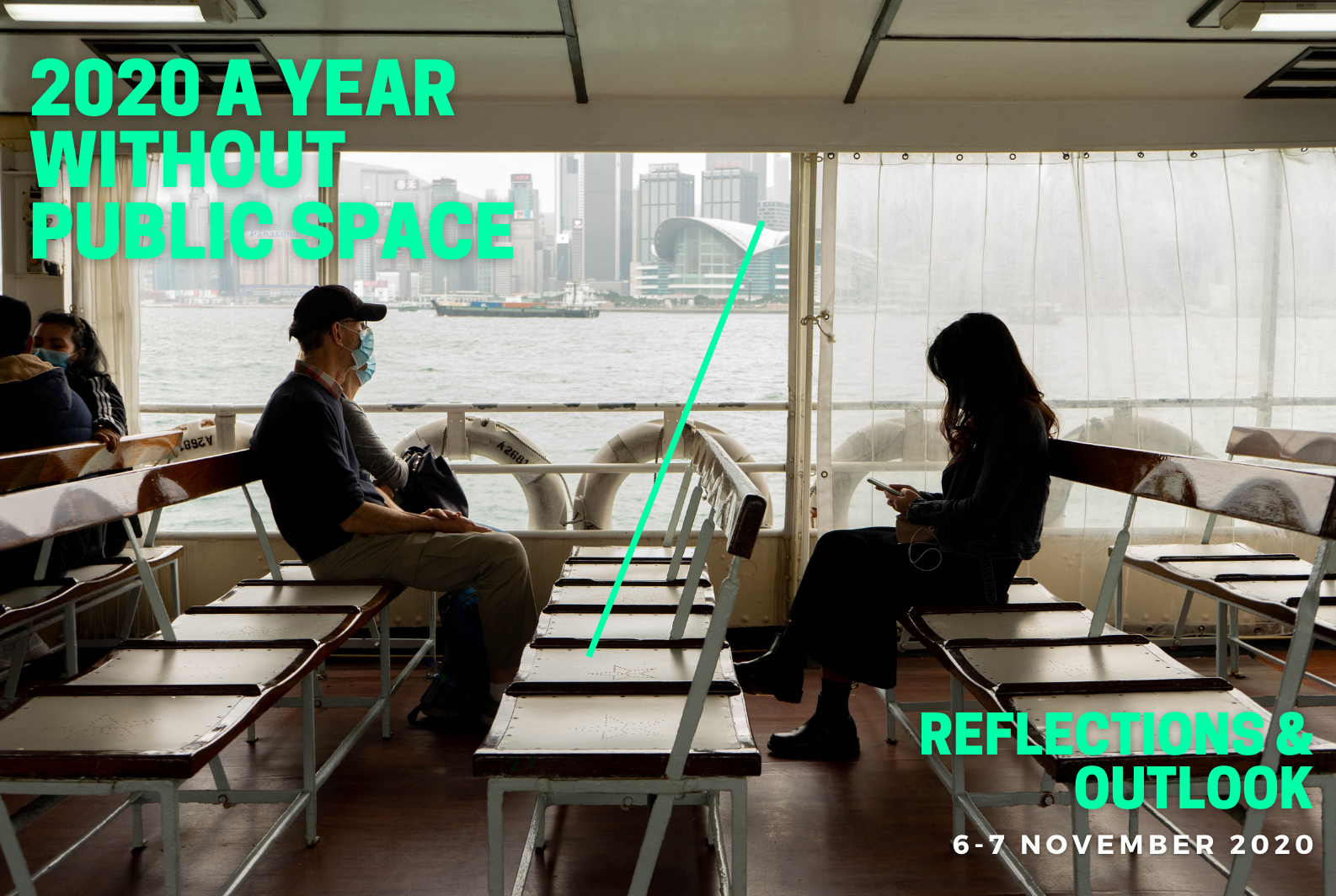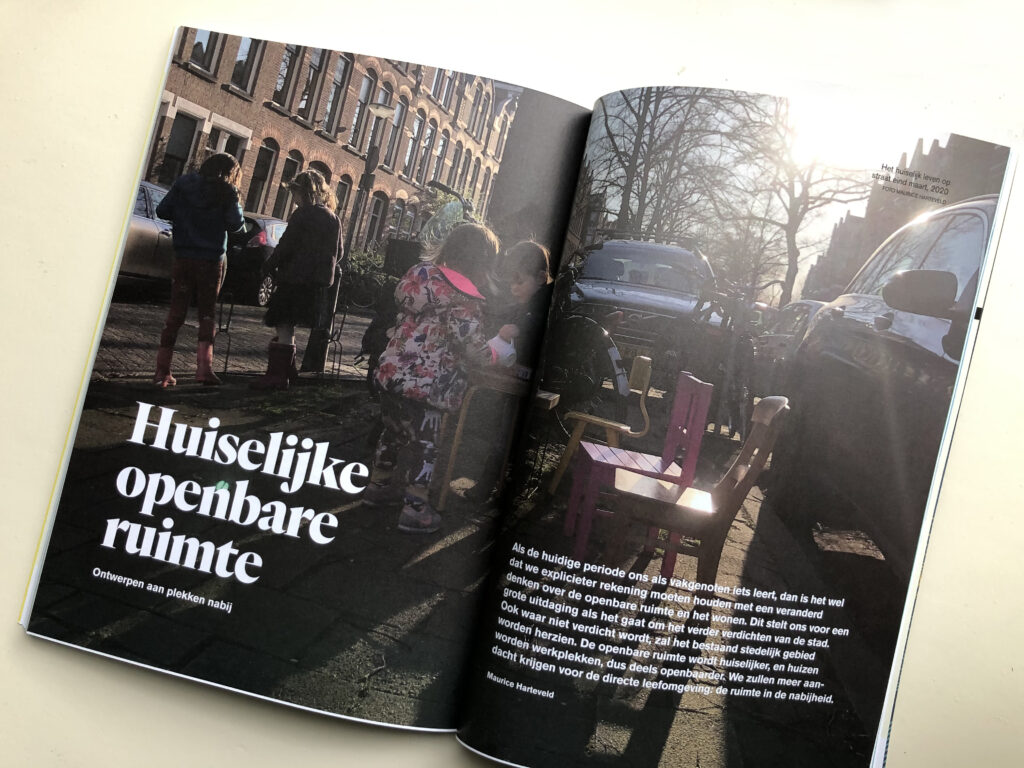In this introduction video, MaartenJan Hoekstra and Maurice Harteveld introduce the issue of urban design and inequality on the neighborhood level and its public spaces. They look at the theory behind the question “does the increase of social mobility and mixing housing add to the inclusivity on the level of the neighborhood?”
Category Archives: future cities
Watching back, Looking forward
All webinars of the ‘2020 a year without public space under the COVID-19 pandemic’ are online.
The Impact of the Pandemic to Street Life, Urban Culture and Beyond
Webinar 4.1 by Maurice Harteveld, published by ‘PublicSpace COVID19’ on YouTube.
Roundtable Discussion and Closing Remarks, as published by ‘PublicSpace COVID19’ on YouTube.
See the transcription of the closing remarks of Maurice Harteveld, including reflections and an outlook beyond, here: Public Spaces for Domestic & Local Life, a slightly adjusted transcription of the opening of the august series of our initiative here: Beyond the Pandemic and read more on the initiative 2020 a year without public space under the COVID-19 pandemic.
Public Spaces for Domestic & Local Life
While the ‘UN-Habitat State of the World Cities Report 2020 on the Value of Sustainable Urbanization’ has been launched, the international symposium ‘2020 A Year Without Public Space: Reflection and Outlook’ has been an opportunity to look back, reflect, and plan ahead for 2021.

The transcription of the closing remarks of Maurice Harteveld at our initiative ‘2020 a year without public space under the COVID-19 pandemic’, including reflections and an outlook beyond (online symposium on 7 November 2020, 3PM (+ 8UTC)):
2020 – A Year without Public Space has been an impressive initiative. We have seen 20 webinars, engaging more than 100 speakers all over the world, and over another thousand attendees watching the presentations and thematic discussions live. On the YouTube channel, we can see that the numbers of views continuously grow. From May to September; the global community of ‘public space’- experts have joined together. The networks of public spaces have become a world-wide-web. Non-Exclusive!
At the moment, we are online, but our concerns are at the human space, in its physical reality. We keep sharing our observations, in an immense challenge. It is not easy! Under the current pandemic crisis, the global death rate is approaching 1.5 million people; 50 million cases of positive testing. An extremely small minority of countries have not reported any coronavirus cases. Kiribati, Nauru, Palau, Samoa, Tonga, Tuvalu, and Vanuatu seem to be still on the safe side. In contrast, particularly, communities in urbanised areas are infected at large. LA, Miami, and New York City… Rio, and Sao Paulo. Here densities are higher, people live closer together, and thus, transmission may go too fast, & too easy.
My contribution to the round table discussion is not another presentation. Deliberately! Continue reading
Creating Value through Public Space
The United Nations just launched the ‘UN-Habitat State of the World Cities Report 2020 on the Value of Sustainable Urbanization‘. “COVID-19 has transformed our urban world. However, it does not signify the end of cities. Urban areas hold the key to resilient, green recovery, and building back better!”, Victor Kisob, th assistant Secretary-General and Deputy Executive Director of UN-Habitat states. The United Nations emphasises that we create “value through public space”. This includes interior public spaces, which were closed due to COVID19-induced lockdowns recently. In this case, “local governments must work to provide sanitation infrastructure in all public spaces in order to mitigate the health risk”. Yet, also, “when designed with climate adaptation, mitigation and resiliency, components of cities from buildings to public spaces can create communities that enhance environmental values”. They also enhance social and economic values. “Cities can unlock the intangible value of sustainable urbanization by creating public spaces and opportunities for democratic participation and social inclusion that allow the cultural fabric of urban life to flourish”. And, public space can offer a livelihood for people to be entrepreneurial and take part of labour work. Equality plays a huge role in sustainable urbanisation. “Diversity contributes to the social, economic and environmental value of urbanization through tolerance, integration, and coming together in public spaces.” This includes for instance the representation of the urban poor, migrants, and cultural minorities, hence this should lead to prioritising “their needs in any decision-making process, be it about the urban commons, atmospheric commons, public spaces or resource use”. And, “engage a wider audience – e.g. children and youth – in urban planning and design processes for safe, inclusive and accessible public space.” Everyone should “understand their rights to access public spaces and services”. I would like to add: Our challenge is to contribute to the design of public spaces for everyone.
World Cities Report 2020
After one Year without Public Space
Wrapping up a challenging year with a final online 2-day symposium ‘2020 A Year Without Public Space: Reflections & Outlook’ to reflect and plan ahead for 2021, particularly in the aspects of Cities & Health, Digital Public Space, Innovative Approaches & Creative Practices, and Campus as Public Space.

2020 passes in a blink. COVID-19 completely changed our world, our work, our school, and our daily life routine. COVID-19 also changed the public space where we for the first time have to stay away with during global lockdown, spaces where we perhaps took for granted for joyous gatherings, block parties, after-school hangouts, parks where we share experiences, exchange a thought, bump into neighbours and colleagues, have become cold spaces for disseminating hygiene items and food supplies, testing cases, or otherwise deserted and fenced off. Yet, at the same time, new spaces emerge, bike lanes, pedestrianized zones, pop-up installations, eateries and street stalls have found their ways in many cities and administrations. Coming to the end of 2020, we feel that now it’s the time to look back, reflect, and plan ahead.
2020: A Year without Public Space under the COVID-19 Pandemic – Reflections & Outlook
International Symposium
6-7 November 2020
register at: www.publicspace-covid19.com
Please be welcome at one of the sessions on Day 1 and Day 2, and particularly to the roundtable discussion and closing remarks.
Continue reading
Digital, Virtual, and Physical
Physical Public Space X Virtual Space
Urban designers and landscape architects observe physical public spaces as spaces that are able to accommodate accidental meetings, reveal places’ identity, provide impulsive on-the-spot choices, and allow human-nature interaction through wind or sunshine. However, the recent crisis unfolds the intertwining between physical public space and virtual space. During two days, we focus on the shift of the planner’s outlook on physical public space and virtual space.
Join the webinars!
When: Thursday, November 5 and 6, 9.00am – 6.00pm CET
> Registration
Bits of Public Space 3.0: Trailer, published by Polis on YouTube
Video credits: Ioanna Kokkona
Continue reading
Domestic Public Space
If the current period teaches us, as colleagues, anything explicitly, it is that we must take account of a changed way of thinking on public space and housing. This shift presents us with a major challenge when it comes to further densification of the city. The existing urban fabric needs revision, even in areas where there is no increase in density. Public space is becoming more homely, and houses are becoming workplaces, so partly more public. We will pay more attention to the immediate living environment: the space in the vicinity.

Read the article in Dutch:
Harteveld, Maurice (2020, October) Huiselijke Openbare Ruimte. Ontwerpen aan Plekken Nabij. In: Ruimte + Wonen. #3/2020 Thema Publieke Ruimte, 101e Jaargang, Nummer 3, October 2020, pp. 72-79
Ruimte + Wonen is a Dutch magazine and knowledge network for spatial professionals and housing experts, originated from the magazines S+RO and Tijdschrift voor de Volkshuisvesting. Go to ‘Ruimte + Wonen’ membership
Beyond the Pandemic
The Impact of the Pandemic to Street Life, Urban Culture and Beyond.
Maurice Harteveld, co-host and moderator of the roundtable discussion with speakers from the Netherlands, from Greece, from France, and from the United States.
Designs for Boston and Amsterdam
Propositions under Continuously Changing Urban Conditions

Massive urbanisation puts pressure on public space and demands new programmes along with alternative gathering places such as public interior spaces and a variety of forms of collective spaces. Moreover, in the rapidly changing city, infrastructure and mobility remain of vital importance. A co-evolving diversity of programme cannot be planned, but interventions in the city need constantly to be grounded on sharp design approaches to respond adequately to the necessities of the time: While being environmentally sustainable, given the available resources.
In general, infrastructure, mobility, and public life manifest themselves in various forms as carriers of such urban development. Design experiments, as put forward in our new book, show how to work with continuously changing urban conditions, with mobility transforming cities whilst with public spaces taking various forms, with programmes which hybridise, and with new technologies to keep up with the urban dynamics. Given these themes, designs should carry awareness of the inclusiveness and accessibility of various systems and places, facilities, and technologies. Spatially this means questioning how to keep the city open and connected, attractive, and liveable?
Continue reading
The Impact of the Pandemic to Street Life, Urban Culture and Beyond
We have seen a growing number of people have been hospitalised per day, and people passed away. Both followed the bell curve. Every country faced critical moments when hospitalised totals stressed the capacity of medical care. The uncertainty among the populations grew in that period. Particularly, the impact of the pandemic to street life became visible in those days. Cities locked down, people stayed at home, and shifts in urban culture became visible. Can we place those changes in a longer perspective? Looking back to what happened before, and forecasting what most likely happens beyond 2020: A Year without Public Space under the COVID-19 Pandemic?

Image created by Catherine Cordasco.
Submitted for United Nations Global Call Out To Creatives – help stop the spread of COVID-19.
Join the webinar!
When: Thursday, August 6, 2.00 – 3.30pm CET
> Registration
This webinar is part of the initiative ‘2020: A Year without Public Space under the COVID-19 Pandemic‘.
Continue reading
